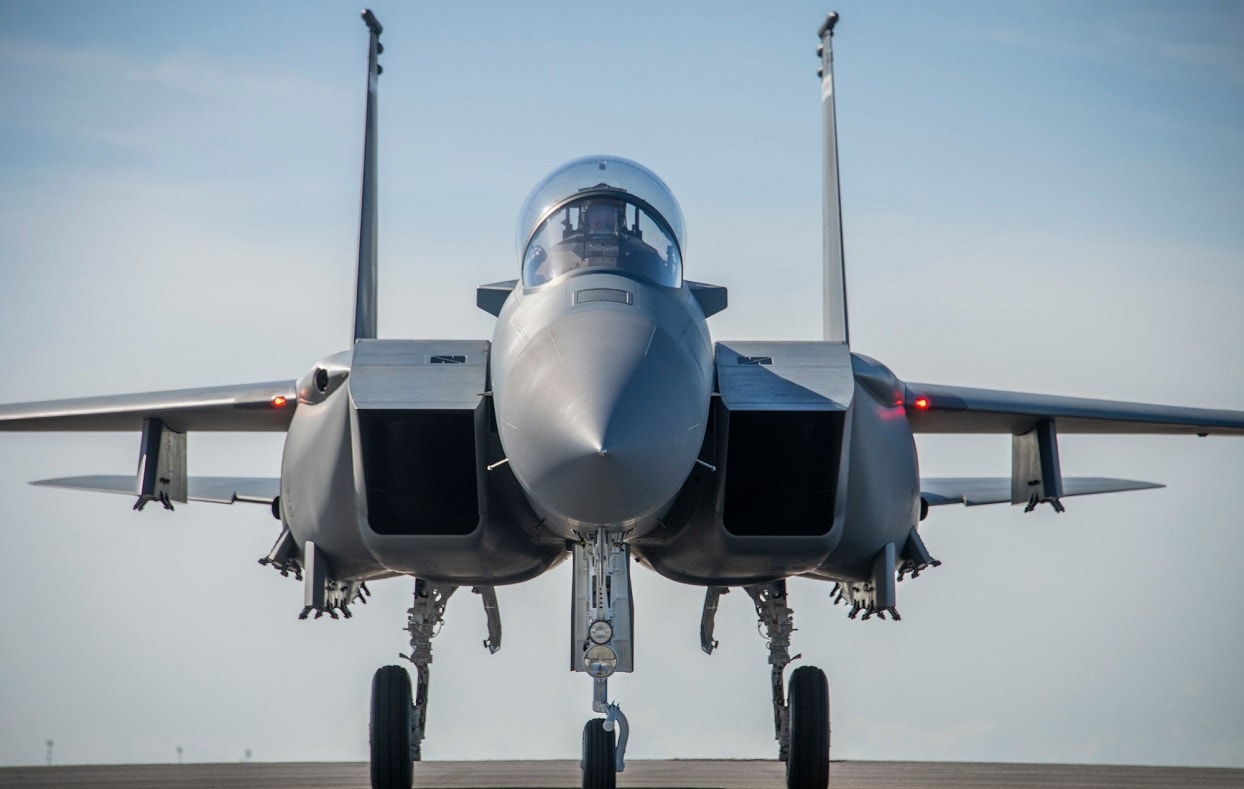Amidst Russia’s ongoing invasion of Ukraine, former Soviet-bloc countries are ramping up their respective security efforts. From air-defense systems to fighter jets, Eastern European nations are on high alert and want to add layers of protection against the growing Russian threat. This week, Boeing confirmed that Poland has expressed an active interest in purchasing its F-15EX Eagle II airframes.
This potential procurement will mark the first time this formidable platform will be flown by any customer besides the U.S. Air Force. The service currently possesses two of these jets and is planning to procure an additional 102 in the near future. Indonesia has also expressed interest in acquiring another Eagle variant, however, no concrete plans have been made yet.
During the MSPO 2023 defense exhibition in Kielce earlier this month, Boeing revealed that a potential “US Department of Defense (DoD) Foreign Military Sales (FMS) buy would be extended to the country for “superior interoperability, supportability and affordability, along with a robust industry plan that would support Poland’s goal of developing independent defence capabilities”. Warsaw’s Eagle II plans coincides with the country’s other efforts to adopt American-made military equipment.
In June, Poland procured a distributed interactive simulation-based systems integration laboratory from the U.S., a move that ensures that Washington and Poland will continue to integrate emerging technologies to their systems in the future.
Poland’s air force is getting a facelift
Poland is already in contract to purchase the FA-50 and the F-35 and hopes to increase its aerial capabilities even more. The Chief of Poland’s air force, Maj. Gen. Ireneusz Nowak had revealed earlier this year that the country plans to have more than 150 combat aircraft in its arsenal. South Korea’s KF-21 Boramae and the Eurofighter Typhoons are also viable options for Warsaw, however, Boeing has said that it would be open to specially modifying any Eagle IIs purchased and that “there is a room for Polonization, for example electronic warfare system or radios, or other systems, but sometimes there are some additional engineering costs” related to customization.”
What makes the F-15EX Eagle II a great addition?
The Eagle II variant recently made headlines when the fighter successfully completed the first phase of its initial operational test and evaluation program this month. Able to launch the longest non-nuclear Air-to-Ground munition in the Air Force’s inventory (the AGM-158 Air-to-Surface Standoff Missile), the latest Eagle iteration is proving its merits.
The Air Force initially discussed the possibility of replacing aging F-15 airframes with a new and improved variant back in 2018.
The service specifically desired a jet that could sport an AESA radar and could carry up to 22 air-to-air missiles with the Advanced Missile and Bomb Ejector Rack. By 2020, the F-15EX program was approved under the National Defense Authorization Act to replace some of the service’s aging fleets.
Notably, the Eagle II can carry the greatest payload of any other strike fighter on the planet, including more technically advanced fifth-generation platforms like the F-35 Lightning II and F-22 Raptor.
In addition to being able to lug 30,000 pounds of munitions, the new Eagles are expected to be able to yield 22-foot hypersonic missiles that are still in the development phase.
If Poland does acquire the new Eagle II, its air force will certainly be a force to be reckoned with.
Maya Carlin, a Senior Editor for 19FortyFive, is an analyst with the Center for Security Policy and a former Anna Sobol Levy Fellow at IDC Herzliya in Israel. She has by-lines in many publications, including The National Interest, Jerusalem Post, and Times of Israel. You can follow her on Twitter: @MayaCarlin.

